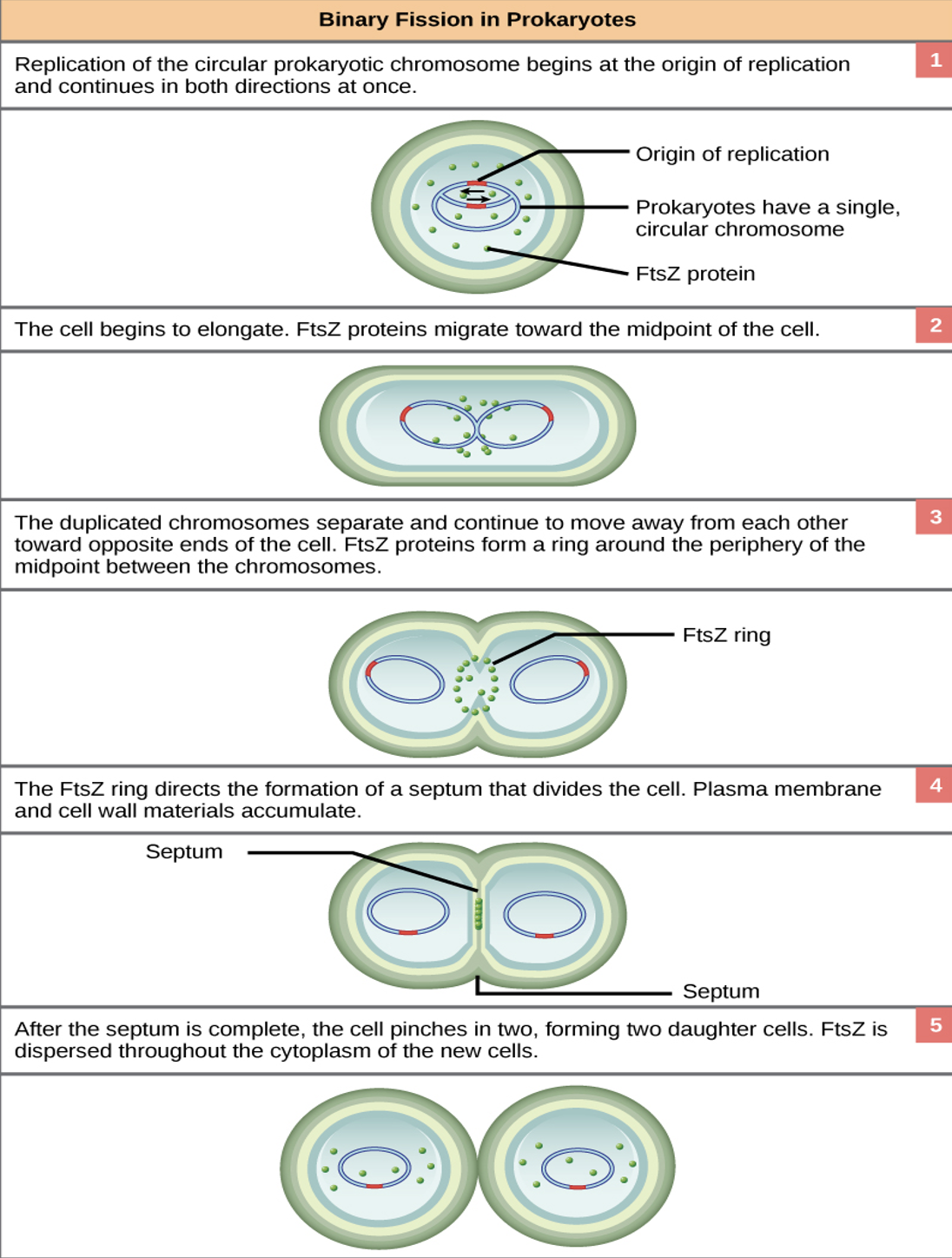Cell reproduction - C&M
1/33
There's no tags or description
Looks like no tags are added yet.
Name | Mastery | Learn | Test | Matching | Spaced |
|---|
No study sessions yet.
34 Terms
2 functions of cell division
multicellular organisms — growth, maintenance, & repair of cells/tissues
single-celled organisms — reproduction
prokaryotic genome
one, double-stranded, circular DNA molecule residing in the nucleoid
additional smaller loops of DNA—plasmids—may be present
exchange of plasmids w/ other cells allows gene transfer
eukaryotic genome
several double-stranded DNA molecules in the form of chromosomes
chromosomes
the # of these in the nucleus varies among species
within a species, # is consistent, but may vary w/ developmental stage or specific cell type
somatic
these cells typically have 2 matched sets of chromosomes which make them a diploid (2n)
gametes
these are egg & sperm cells, and they have half the number of chromosomes which makes them haploid (n)
karyotype
arranging the chromosomes by size produces a…
homologous
chromosomes (homologs) that pair in reproduction of diploid cells are…
heterologous
some genomes have pairs that don’t match (X & Y chromosomes in humans) , and they are…
condensed, compact
eukaryotic DNA must be ___ into ___ chromosomes to fit into the nucleus
histone proteins
packaging is accomplished by short stretches of DNA that wrap around a core of 8 _____ _____ (like a string of beads):
histone-DNA complex (the bead) is called a nucleosome & the connecting DNA (string) is called linker DNA
coils to form a chromatin fiber
fibrous proteins further pack each chromosome
the cell cycle
an ordered series of events in the life of a cell
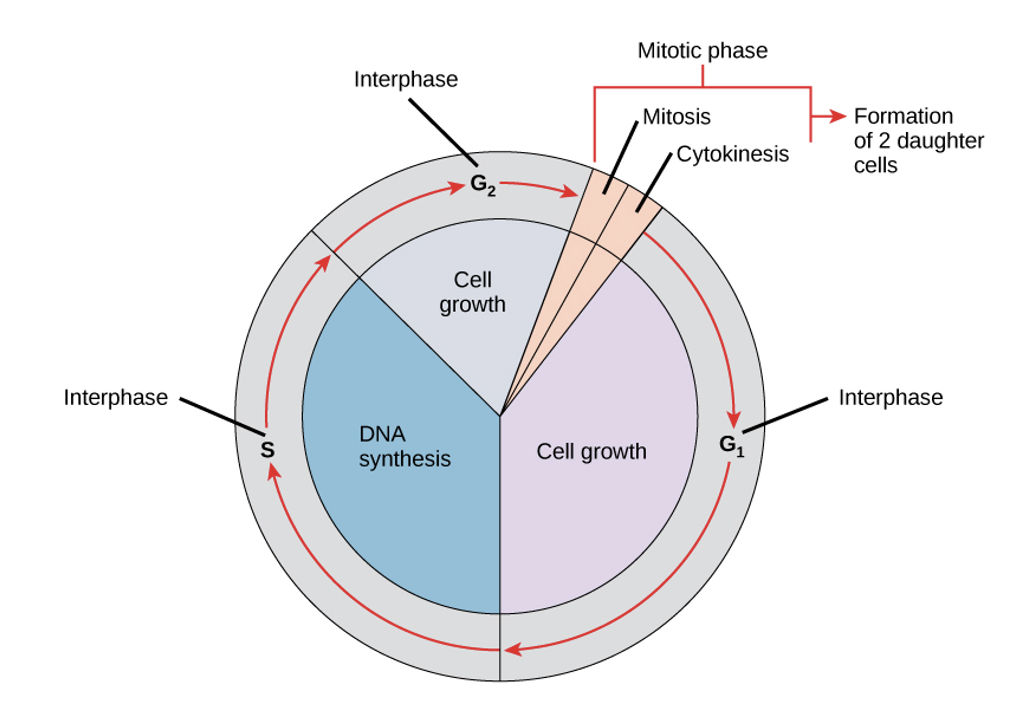
2 phases of the cell cycle
interphase
normal growth & preparation for cell division
mitotic phase
replicated DNA & cytoplasm are split—cell divides
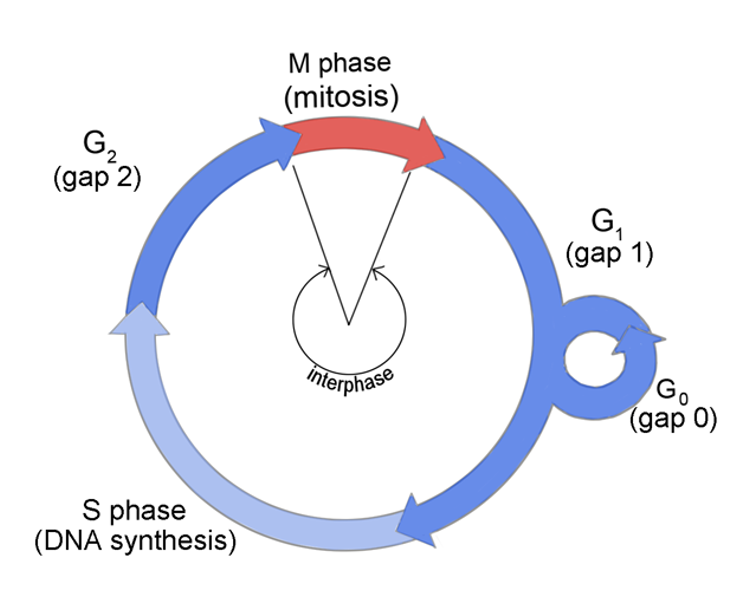
G1 phase
change is not evident (“first gap”), but the cell is biochemically active

S phase
DNA synthesis:
identical copies of DNA molecules (sister chromatids) are joined at centromere
centrosomes produce mitotic spindles to move chromosomes
animal cells — centrosomes are associated w/ centrioles which organize cell division
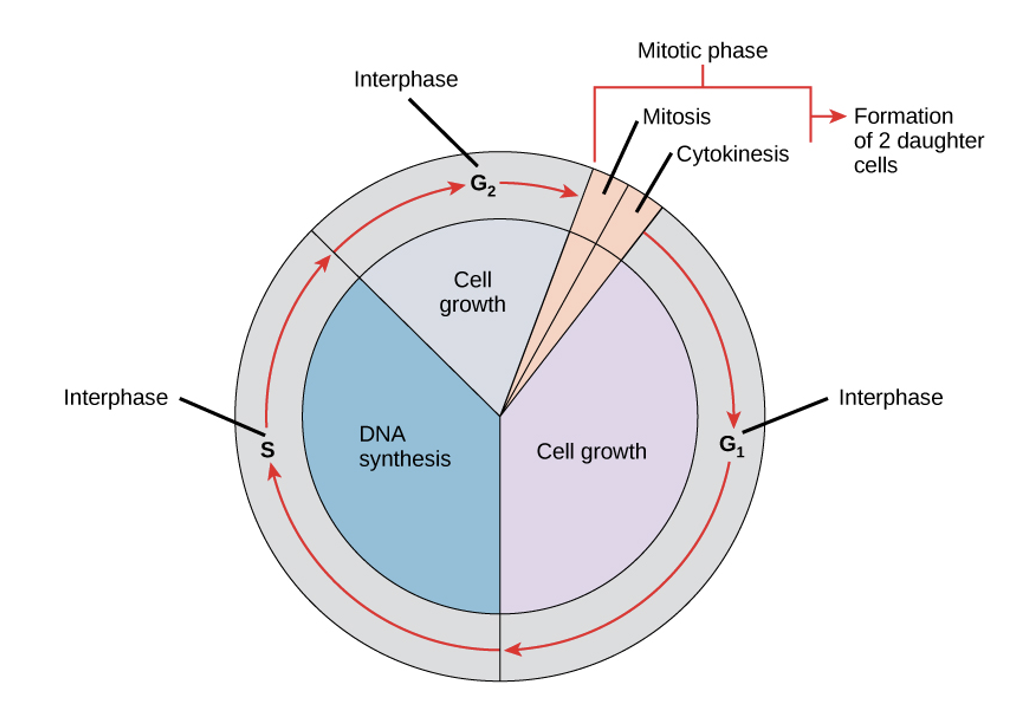
G2 phase
energy is replenished, organelles reproduce, & cytoskeleton breaks down (“second gap”)
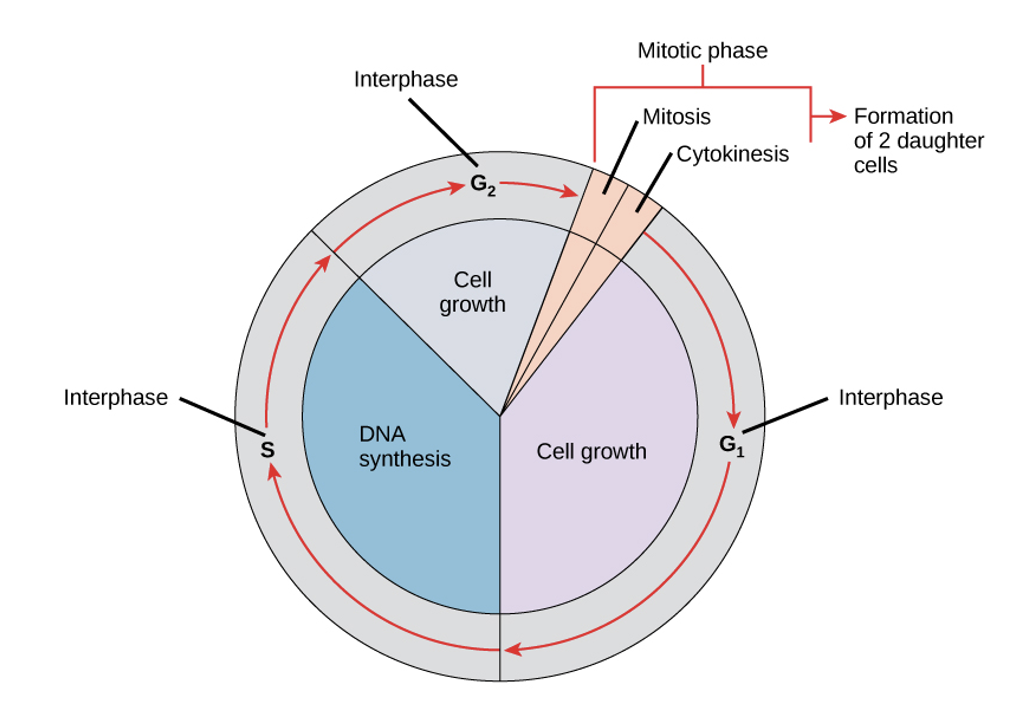
2 mitotic phases
mitosis — aka karyokinesis; nuclear division
cytokinesis — cytoplasmic components physically separate into 2 daughter cells
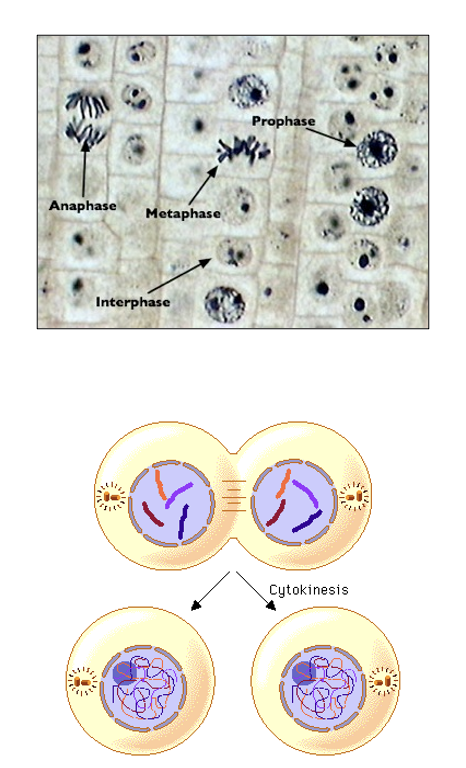
prophase
nuclear envelope breaks down
membranous organelles (Golgi, ER) disperse toward edges of cell
nucleolus disappears
centrosomes begin migration to poles
microtubules of spindle form
sister chromatids coil tighter w/ aid of condensing proteins
prometaphase
sister chromatids develop a protein kinetochore in the centromere region
attaches the chromatids to the spindle microtubules
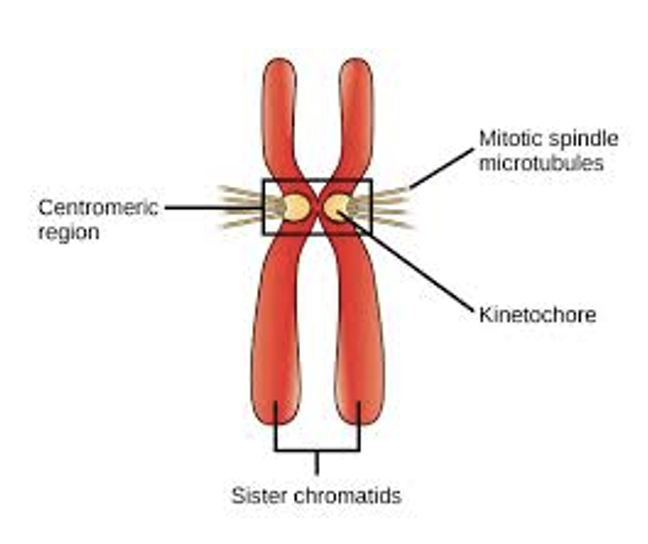
metaphase
chromosomes line up along metaphase plate
sister chromatids remain attached by cohesion proteins
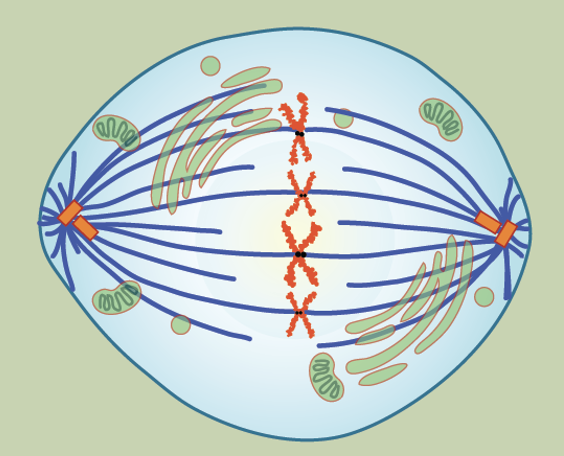
anaphase
cohesion proteins degenerate allowing chromatids to separate
separated sister chromatids move in opposite directions
towards centrosomes where microtubules are attached
cell elongates

telophase
chromosomes reach opposite poles & begin to unravel
spindles depolymerize into tubulin monomers that will form cytoskeletal components for daughter cells
nuclear envelopes form around the chromosomes & nucleosomes appear w/in the near area
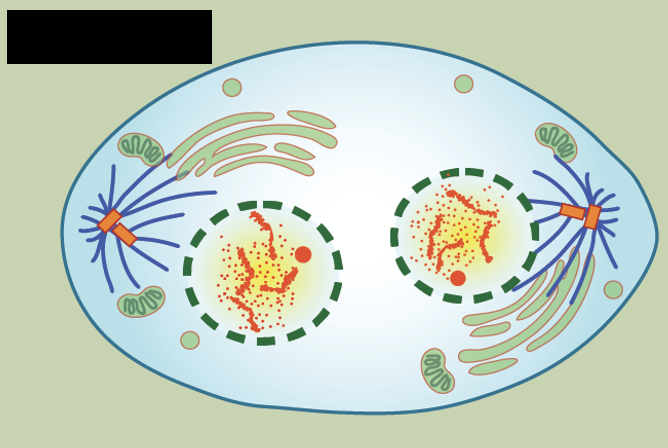
cytokinesis
cell division is completed via the physical separation of the cytoplasmic components into 2 daughter cells

cell cycle checkpoints
near the end of G1
at the G2 to mitosis transition
in metaphase of mitosis
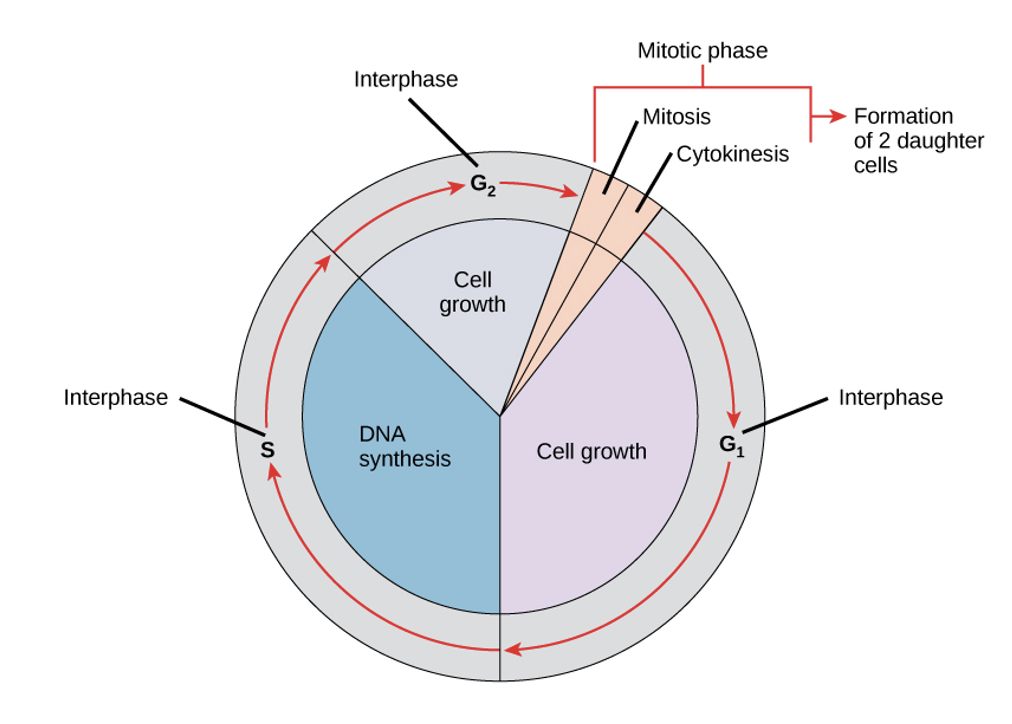
control of the cell cycle
external triggers can initiate OR inhibit the cycle (internal ones can also do this):
death of nearby cells
release of growth hormones
cell crowding
G1 checkpoint
are conditions favorable for cell division?
important — external influences, adequate cell reserves, & size
check for DNA damage!

if conditions aren’t met…
…cell won’t be allowed to enter S phase
…stop the cycle & try to fix problem
…enter G0 & wait to get better
G2 checkpoint
prevents entry into the mitotic phase if conditions aren’t met:
size & protein reserves are checked again
ensure all chromosomes have been replicated & no DNA damage
problems? — cycle is halted while cell tries to complete DNA replication OR repair DNA
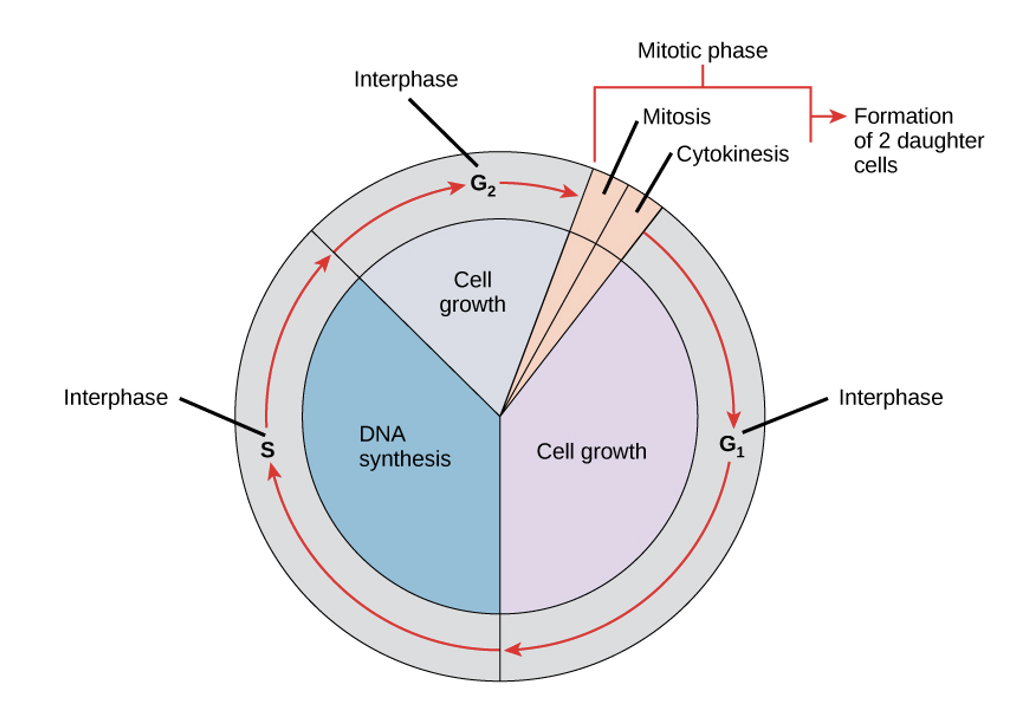
M checkpoint
aka “spindle checkpoint”; determines whether sister chromatids are correctly attached to spindle microtubules
near end of metaphase
problem? — cycle won’t proceed until kinetochores of each pair of sister chromatids are firmly anchored to at least 2 spindle fibers
failure = non-disjunction of chromatids
cyclins & cyclin-dependent kinases (Cdks)
levels of these proteins fluctuate predictably
internal & external signals can trigger increases
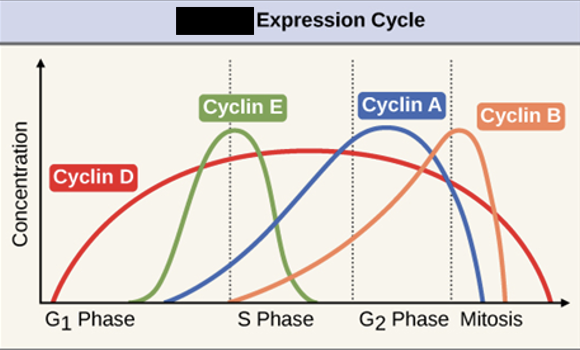
cancer
many different diseases characterized by uncontrolled cell growth
begins w/ a gene mutation that results in a faulty protein regulating cell production
tumors result when reproduction of mutated cells surpass growth of normal cells
proto-oncogenes
normal genes that code for positive cell cycle regulators:
mutated = oncogenes
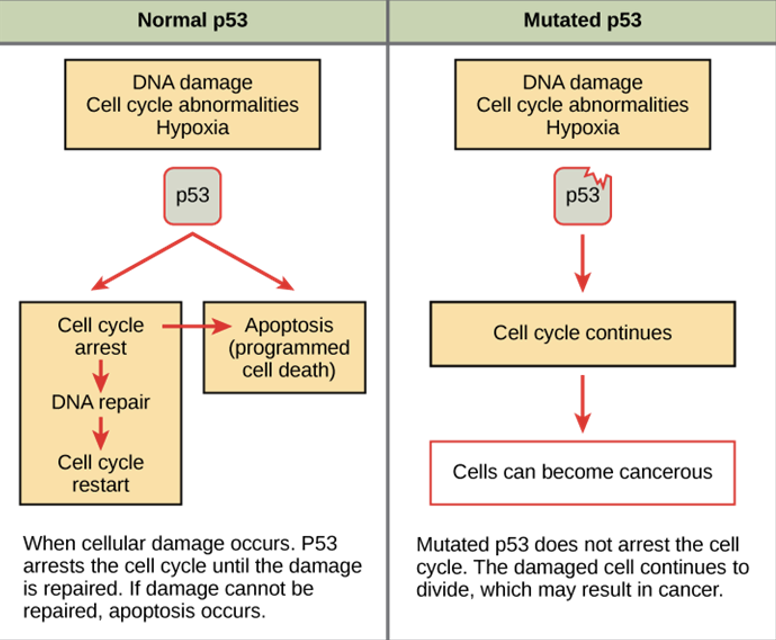
tumor suppressor genes
segments of DNA that code for negative regulator proteins:
when activated = prevent uncontrolled division
mutated neg. reg. = cannot stop cycle if there’s a problem
binary fission
prokaryotic cell division happens by…
